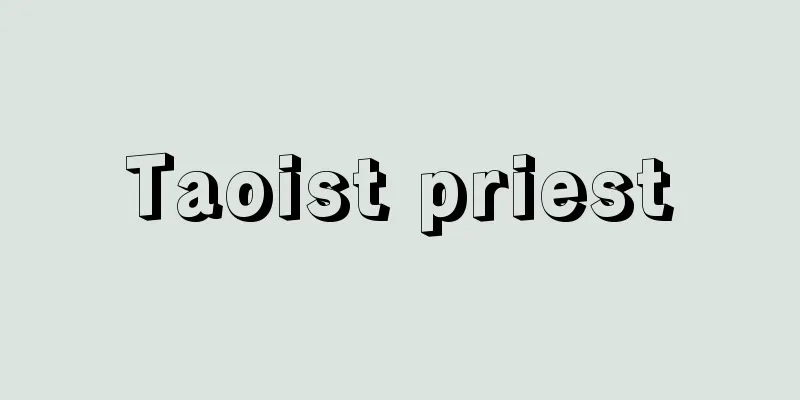Junzo Ishiko

|
Art critic. Born in Tokyo. Real name Kimura Yasunori. Graduated from the Faculty of Economics at the University of Tokyo in 1953 (Showa 28). Studied at the same university's graduate school and the Department of Art History at the Faculty of Letters until 1957. Joined the editorial department of Hyoronsha in 1957. Joined a logistics company in Shimizu City, Shizuoka Prefecture (now Shizuoka City) in 1958, leaving in 1964. Returned to Tokyo the following year in 1965 and worked as a critic. While still in Shizuoka in 1958, he formed the group "Shiro" with artists from the Shimizu area who had gathered together out of admiration for Ishiko. Members of the group "Shoku" who lived in Shizuoka City further joined, and in 1966 the group "Genshoku" began its activities, increasing in number and engaging in active art movements until its disbandment in 1971. During this time, Genshoku held over 10 exhibitions, including Tricks and Visions: Stolen Eyes (1968, Tokyo Gallery/Muramatsu Gallery, Tokyo), which was jointly organized with Nakahara Yusuke. This exhibition marked the end of the anarchic era of the avant-garde movement that had developed across genres in the 1960s, and prompted the birth of the Mono-ha movement, becoming an important exhibition in the history of Japanese contemporary art. Ishiko not only considered paintings, but also museums, screening systems, and other such institutions as a whole, and positioned the ideas of avant-garde objects from the 1960s and the possibilities of happenings as an extension of this. His analysis culminated in his book, "The Curse of Modernity in Expression" (1970). In order to critically examine the limitations of this "modernism of seeing," she examined the institution of "modernity" from the perspective of pre-modern common people's sensibilities of indigenousness, vulgarity, and kitsch. She also loved Tsurumi Shunsuke's "Genkai Geijutsuron" (1967) since her days in Shizuoka, and deepened her thoughts by combining it with a folkloric perspective. Her research into popular culture = common people's aesthetic sense is reflected in her books "Manga Geijutsuron" (1967), "Gendai Manga no Shiso" (1970), "Zoku no Shiso" (1971), "Ko-e-ma Zufu" (1972), and "Kitsch no Sacred and Secular" (1974). Ishiko's omnidirectional thinking expanded her range of interests from art and theater criticism to illustration, manga, and graphic design. Her central theme was the elucidation of "modernity in expression," but her early death meant that her work was cut short without the full picture being revealed. His historical position, including unearthing his works, has become an issue for the art world. [Naoyuki Takashima] "The Spell of Modernity in Expression" (1970, Kawashima Shoten) ▽ "The Philosophy of Contemporary Manga" (1970, Taihei Publishing) ▽ "The Philosophy of Vulgarity - The Aesthetic Sense of the Common People of Japan" (1971, Taihei Publishing) ▽ "Illustrated Book of Small Ema - The Confined Prayers of the People" (1972, Haga Shoten) ▽ "The Sacred and Profane of Kitsch - The Aesthetic Sense of the Common People of Japan Continued" (1974, Taihei Publishing) ▽ "The Collected Works of Ishiko Junzo, Volume 1: Kitsch Theory", "The Collected Works of Ishiko Junzo, Volume 2: Image Theory", "The Collected Works of Ishiko Junzo, Volume 3: Comic Theory" (1986, 1987, 1988, Lamasha) ▽ "The Art of Manga - The Sense of Contemporary Japanese People and the Merits and Demerits of Humor" (Fuji Shinsho) ▽ "The Theory of Marginal Arts" by Shunsuke Tsurumi (Chikuma Gakugei Bunko) [References] | | |Source: Shogakukan Encyclopedia Nipponica About Encyclopedia Nipponica Information | Legend |
|
美術評論家。東京生まれ。本名木村泰典(やすのり)。1953年(昭和28)東京大学経済学部卒業。57年まで同大学院ならびに文学部美術史学科で学ぶ。57年、評論社編集部に入社。58年、静岡県清水市(現静岡市)の物流会社に入社し、64年退社。翌65年東京に戻り、評論家として活動。静岡時代の58年に、石子を慕って集まった清水市近在の美術家たちとグループ「白」を結成。さらに静岡市在住のグループ「蝕」メンバーが加入し、66年にグループ「幻蝕」の活動が始まり、71年の解散までメンバーを増やしながら、積極的な美術運動を行った。 この間「幻蝕」は10回以上の展覧会を開いた。企画展としては、中原佑介と共同企画の「トリックス・アンド・ビジョン 盗まれた眼」展(1968、東京画廊・村松画廊、東京)がある。同展は、1960年代にジャンルを越えて展開された前衛運動のアナーキーな時代の終焉を印象づけ、「もの派」の誕生を促し、日本の現代美術史上重要な展覧会となった。 石子は、絵画の場合だけでなく、美術館や審査制などを含めた全体を「見ること」の制度として捉え、その延長線に60年代の前衛のオブジェの思想やハプニングの可能性を位置づけた。その考察は著書『表現における近代の呪縛』(1970)に結実する。 これら「見ることの近代主義」の限界を批判的に考察するために、前近代的な庶民の感覚である土着や俗悪、キッチュという位相から「近代」という制度を検討した。また、静岡時代から鶴見俊輔(つるみしゅんすけ)の『限界芸術論』(1967)を愛読し、民俗学的見地と重ねて思考を深めていた。それらの大衆文化=庶民の美意識の研究については、著書『マンガ芸術論』(1967)、『現代マンガの思想』(1970)、『俗悪の思想』(1971)、『小絵馬図譜』(1972)、『キッチュの聖と俗』(1974)に反映されている。石子の全方位的思考は、美術や演劇の批評からイラストや漫画、グラフィック・デザインまで興味範囲を広げていた。中心のテーマは「表現における近代」の解明であったが、早逝によって、その業績は全体像をみせぬまま途切れた。その歴史的位置づけは、著作の掘り起こしを含め、美術界の課題となっている。 [高島直之] 『『表現における近代の呪縛』(1970・川島書店)』▽『『現代マンガの思想』(1970・太平出版社)』▽『『俗悪の思想――日本的庶民の美意識』(1971・太平出版社)』▽『『小絵馬図譜――封じこめられた民衆の祈り』(1972・芳賀書店)』▽『『キッチュの聖と俗――続・日本的庶民の美意識』(1974・太平出版社)』▽『『石子順造著作集 第1巻 キッチュ論』『石子順造著作集 第2巻 イメージ論』『石子順造著作集 第3巻 コミック論』(1986、1987、1988・喇嘛舎)』▽『『マンガ芸術論――現代日本人のセンスとユーモアの功罪』(富士新書)』▽『鶴見俊輔著『限界芸術論』(ちくま学芸文庫)』 [参照項目] | | |出典 小学館 日本大百科全書(ニッポニカ)日本大百科全書(ニッポニカ)について 情報 | 凡例 |
<<: National Medical Examination - Ishikokashiken
Recommend
Ateshidoshuji - Ateshidoshuji
... refers to staff members of the Board of Educa...
Olenus
...Fossils have often been found in which the bod...
Crocus vernus (English spelling) Crocusvernus
…[Hiroshi Aramata]. … *Some of the terminology th...
Parts industry
This term refers primarily to industries that prod...
Mercury dissolving
...An industrial method for producing sodium hydr...
Waji Shoransho
A book on the use of kana. Five volumes, five boo...
Epidendrum cochleatum (English spelling) Epidendrum cochleatum
…[Koichi Ejiri]. … *Some of the terminology that ...
Map of the country - Kokuzu
Maps used as tools for the Ritsuryo administration...
Caquetoire (English spelling)
An armchair made in France in the late 16th centur...
Akagyoja - Akagyoja
…In the most important ritual of the mountain pri...
Art Museum
...Art museums and museums are two concepts that ...
SOFAR - Sofa
《 sound fixing and ranging 》A path through which s...
Diplomatic techniques
...Diplomatic amateurs are increasingly participa...
Urgemeinschaft
…However, even in this case, if there exists an o...
Cross - 10
[1] 〘Noun〙① Ten characters. The character for ten....









![Sanriku [town] - Sanriku](/upload/images/67cbb7969e84e.webp)